Immunolabeling
We employ two different methods for immunolabelling. The first one involves Cryo embedding, sectioning and labeling, while the second one is pre-embedding labelling where cells are grown on cover slips and the immunolabelling is performed on the whole cells before standard epon embedding.
Immunolabeling of cryo-sections (Tokuyasu method)
Cells are grown in dishes or flasks and:
- fixed with formaldehyde/glutaraldehyde mixture
- embedded in gelatine
- infiltrated with sucrose for cryoprotection
- frozen by immersion in liquid nitrogen
Ultrathin sections are cut with a cryo-ultramicrotome at -120 °C and. Sections on grids are immunolabelled and tagged with protein A-conjugated with 5, 10 or 15 nm gold particles. Using this method, it is possible, for very good antibodies to combine two different antibodies consecutively using different sized gold particles.
Pre-embedding immunolabelling
Cells grown on glass coverslips are immunolabelled prior to flat-embedding in epon. Cells are
- fixed with formaldehyde/glutaraldehyde mixture
- Immunolabelled using Fab-fragments of secondary antibodies with 1.4 nm gold particles
- Nano-gold particles is silver enhanced and stabilized by gold toning
- Flat embedded in epon and sectioned
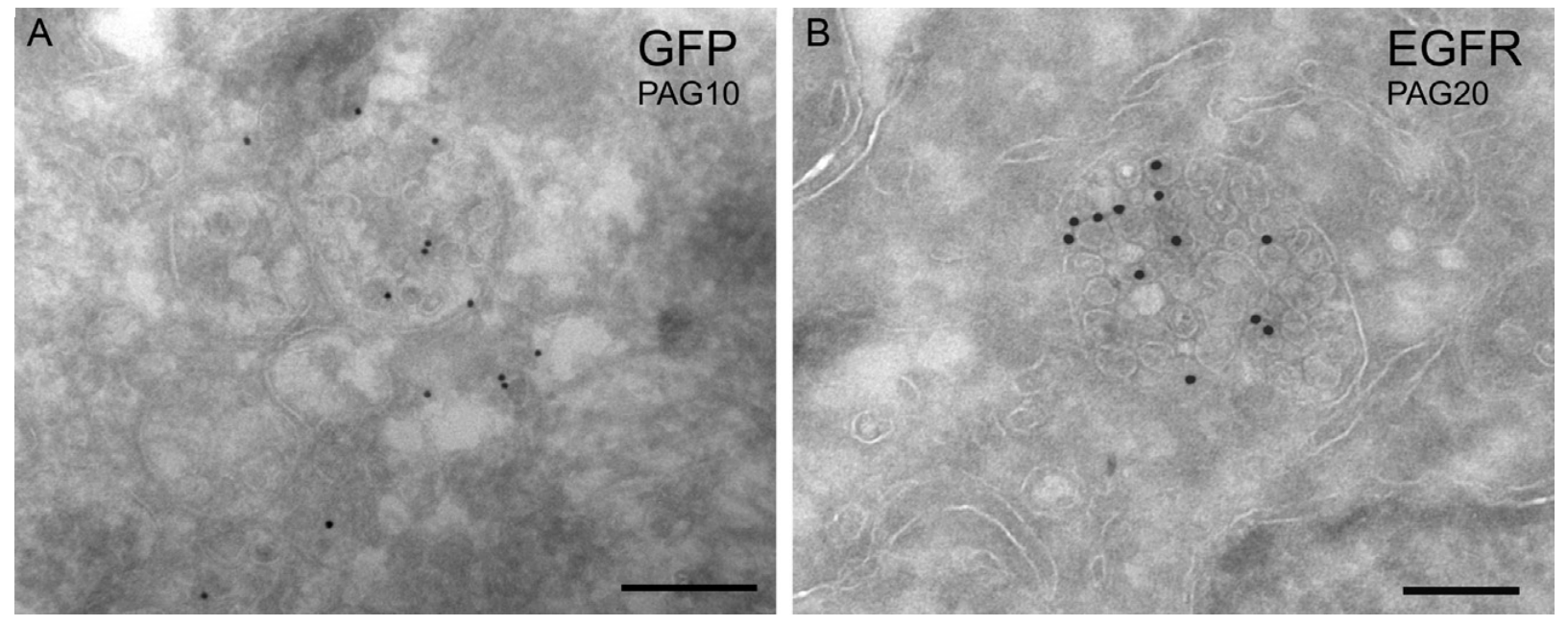
Wegner et al. 2014, Methods in Enzymology, Tokuyasu method |
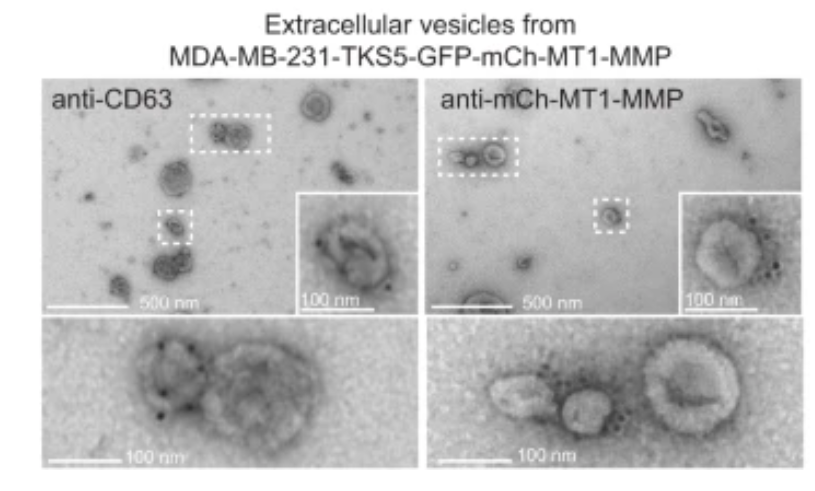
|

|

|
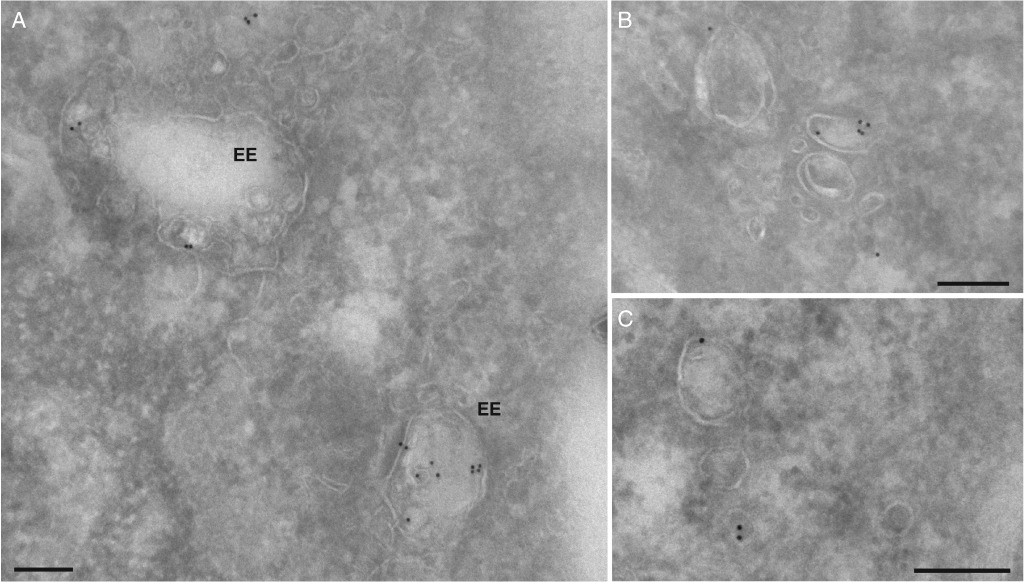
|
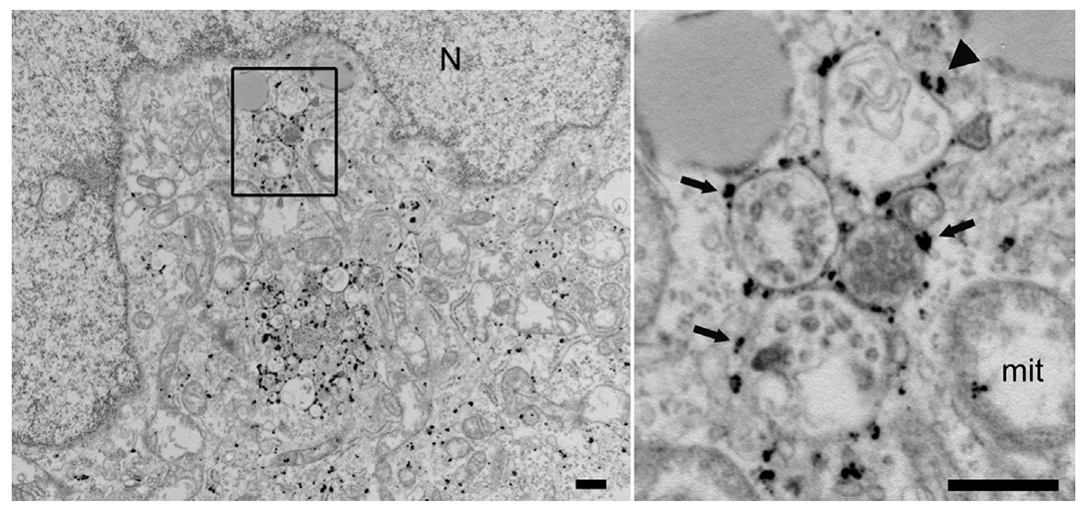
|

|
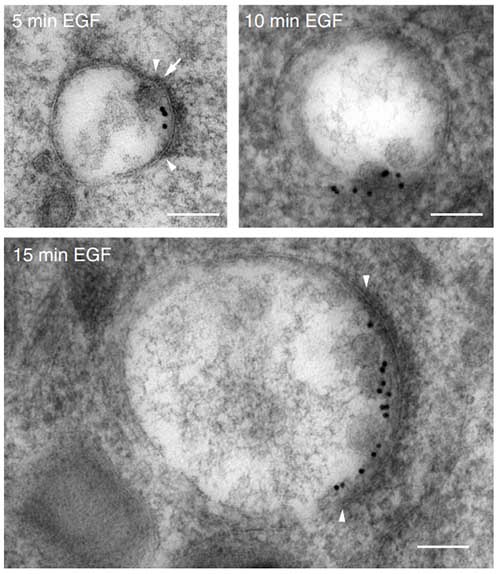
|
